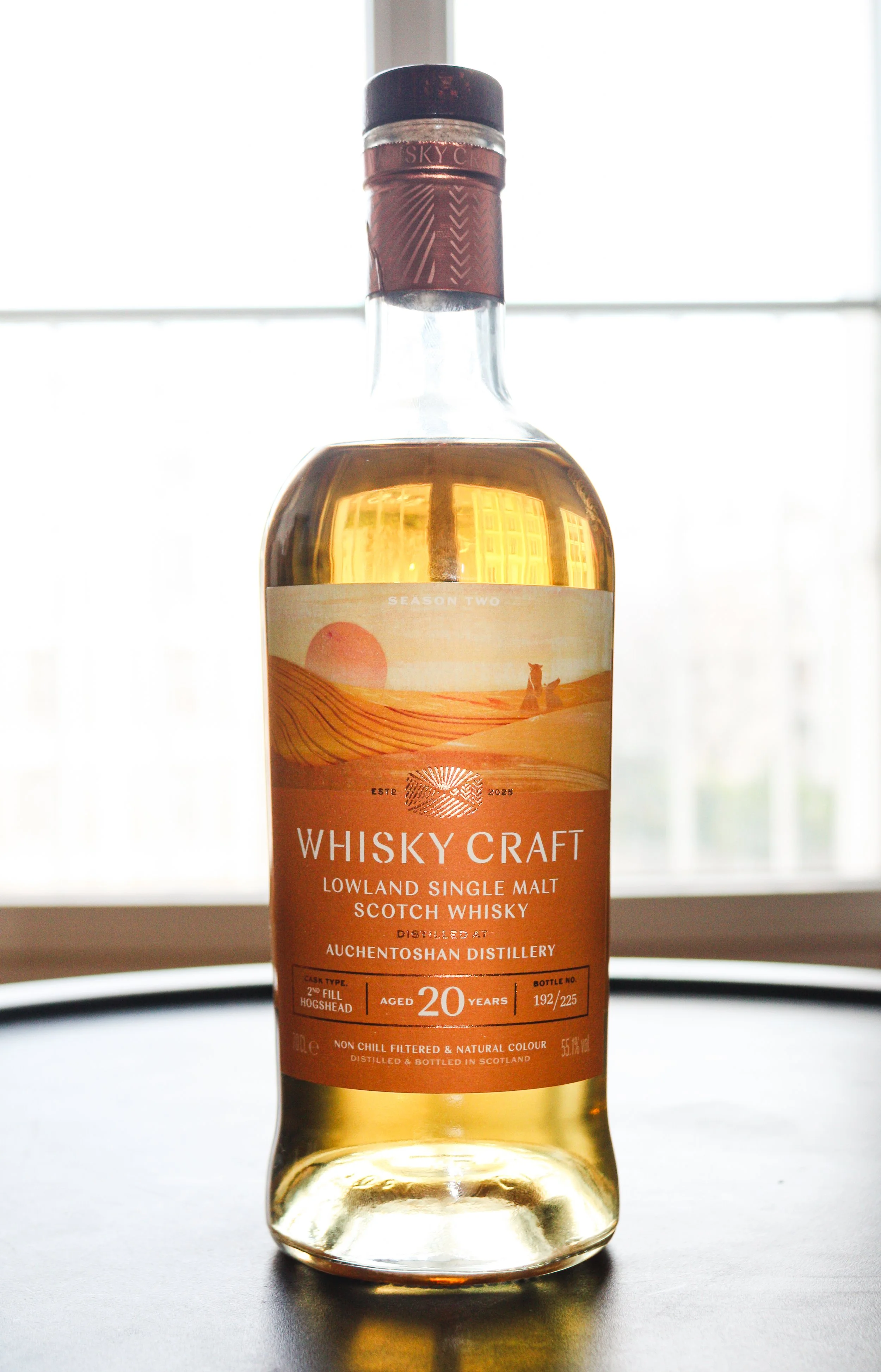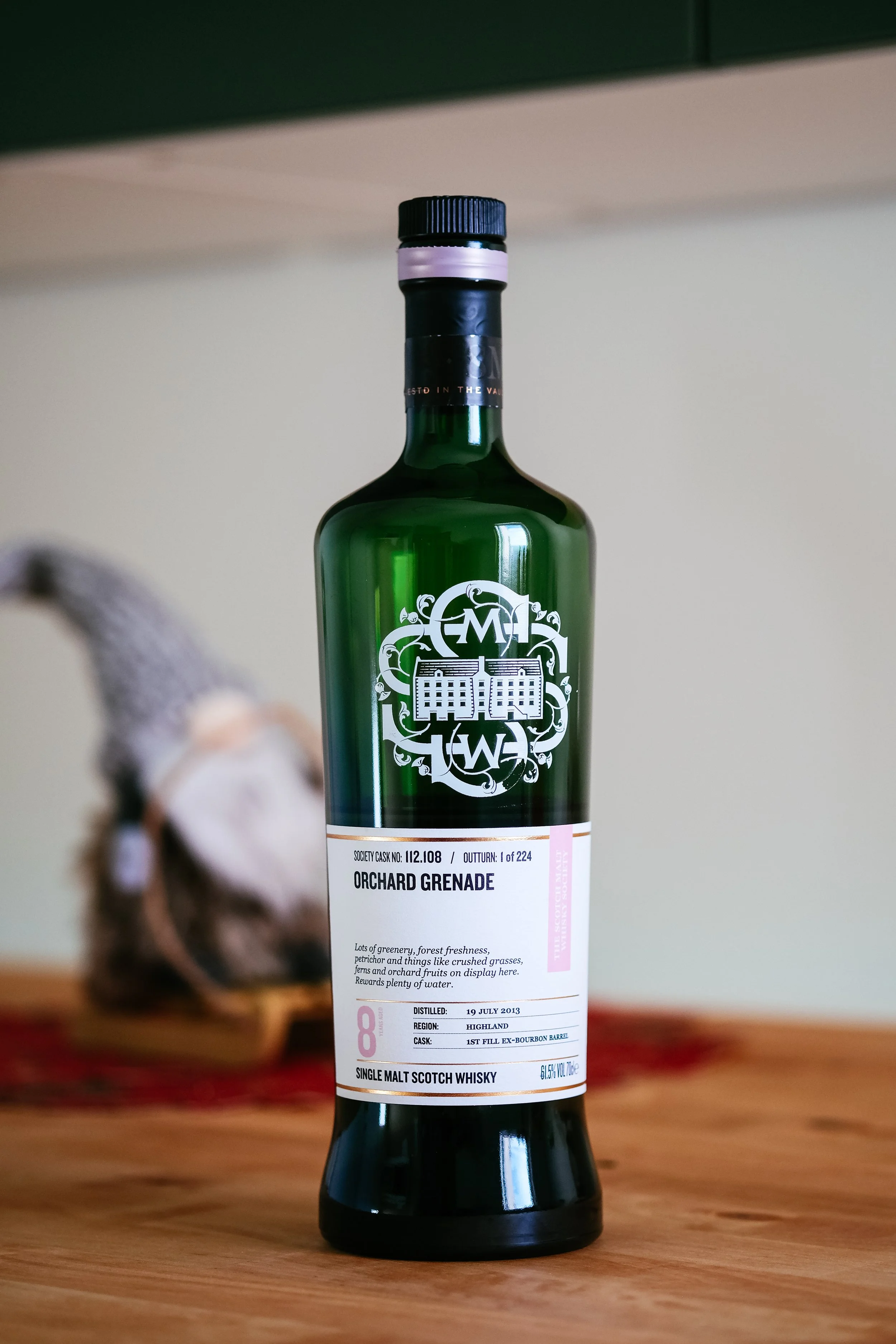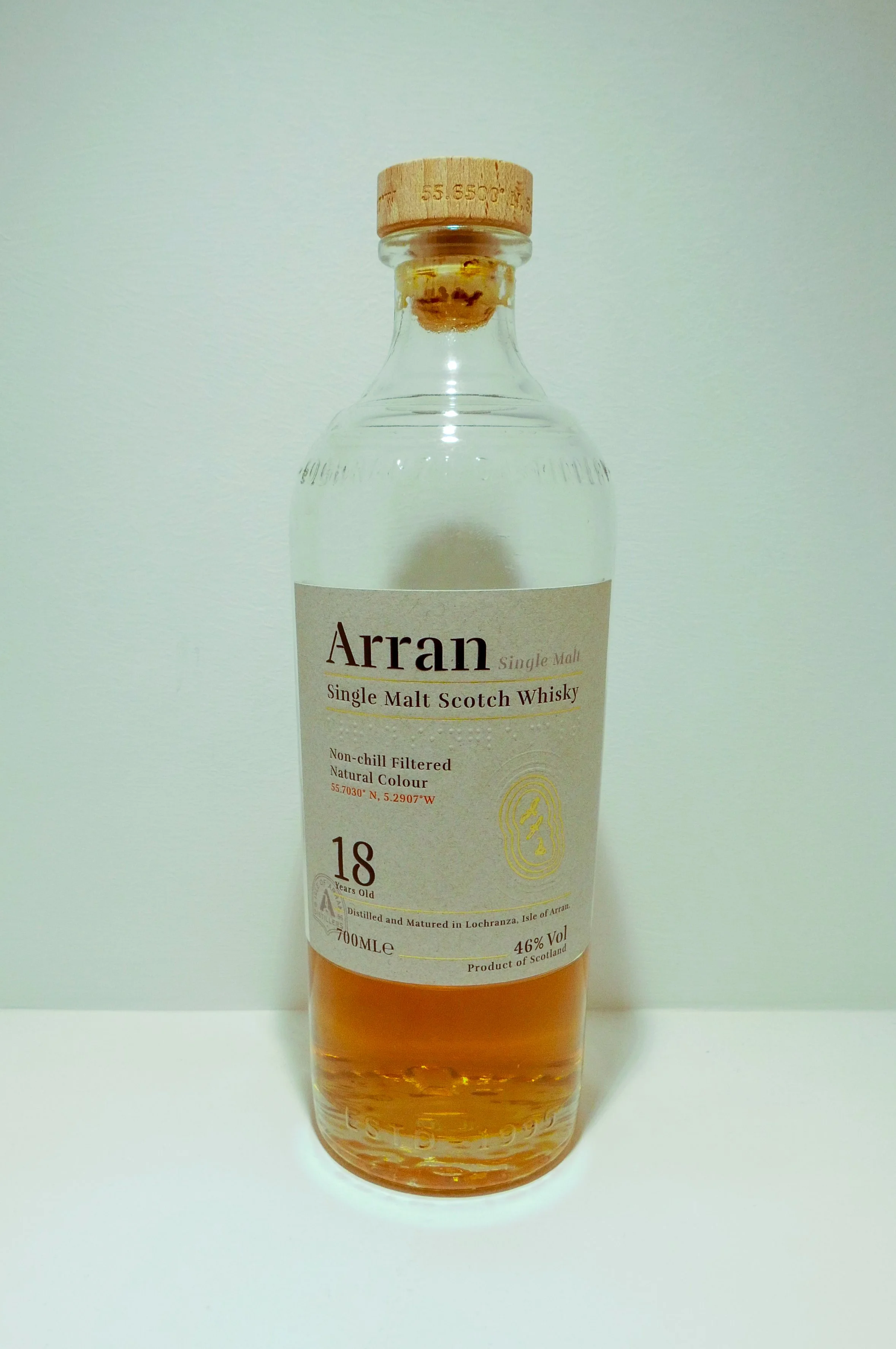Torabhaig Duo
Allt Gleann Batch Strength & Sound of Sleat | Various ABV
It’s hard to keep up
Sometimes it feels like trying to keep up with new Scotch whisky distilleries is a bit like chasing mist across a moor as you head towards the Old Man of Storr. Just when you think you’ve mapped the terrain, another name appears on the horizon; another inaugural release lands and the landscape shifts again.
Even for someone with a deep interest in the amber gold, the pace of new arrivals can be dizzying.
Truth be told, I’ve never quite managed to get a firm grip on all the older distilleries either. Speyside, in particular, remains something of a blind spot—there are plenty of names I’ve yet to try, and even more I’ve only brushed past through fleeting drams. Other areas have always grabbed my attention more, with a flavour profile that suits me. Speyside always seems a bit lacking in punch – but I’m sure at some point in my whisky journey I’ll end up down a Speyside rabbit hole. But the whisky choice is often bigger than our budget, and broader than our liver’s patience.
Even among the distilleries I have explored and enjoyed, there’s a curious phenomenon: after the excitement of inaugural releases and early bottlings, it’s easy to lose track. The whisky world doesn’t wait - it marches on with new batches, limited editions, and experimental casks. And while the spirit may be timeless, our shelves and wallets are not.
My first foray into Torabhaig was with the Cnoc Na Mòine by Wally, a peat-fuelled dram that struck a fine balance between youthful vigour and coastal depth. It was a whisky that deserved a regular spot in the rotation. And yet, somewhere along the way, it’s languished a bit - quietly gathering dust while other bottles clamour for attention.
Recently, the Dramface writers’ WhatsApp group lit up with chatter about the branding of Torabhaig Legacy Series Chapter 4: Sound of Sleat. The label features a slimmed-down rendition of a painting by local Skye artist, Ellis O'Connor, although I personally didn’t feel that it did justice to the original artwork. In this case, the label felt slightly too much like a thumbnail.
I absolutely love the square bottles Torabhaig use; very identifiable and well designed. But one other thing I genuinely admire about Torabhaig is the level of detail they offer about their releases: cask types, barley varieties, fermentation times - it’s all laid out with clarity and care. For anyone who revels in the details, it’s a treasure trove. Of course, not everyone shares that enthusiasm. The word terroir alone seems to trigger eye-rolls in certain corners of the whisky world, and there’s a notion from some that all this transparency is just for the geeks - and worse, that it may unnecessarily drive up bottle prices.
Personally, I find that argument a bit thin. I can’t imagine that listing your barley source or cask provenance adds any meaningful cost to production. If I were a distiller (and oh, how I wish) there is no doubt I would know these details, so why would I not be shouting those details from the rooftops - or at least printing them on the label and publishing them on the website. If a distillery is proud of its process, why not share it? After all, whisky isn’t just liquid - it goes way beyond that. The more we know, the deeper the connection.
So, what else has Torabhaig put out alongside or since the Cnoc Na Mòine? It’s time to revisit the distillery - to reconnect and expand my knowledge of them.
Sometimes, maybe the most rewarding journeys aren’t about discovering something new - but about rediscovering something we almost forgot.
Review 1/2
Torabhaig Legacy Series Chapter 2: Allt Gleann Batch Strength, 61.1% ABV
£75 and still available
This Allt Gleann Batch Strength comes in at a punchy 61.1% ABV, offering the full-fat experience compared to the 46% version reviewed by Drummond and Wally back in March 2023. That earlier expression received worthy praise, scoring a 6/10 and a 7/10 respectively.
We can easily find out that it is a blend of Concerto and Laureate malted barley, matured in a mix of first-fill Bourbon barrels (80%) and refill whisky casks (20%). That combination - batch strength and first-fill bourbon - immediately piqued my interest.
They’ve even listed the yeasts used: Pinnacle MG+ and Safspirit M-1. Arguably, that’s a detail too far for me, though I’m sure it’ll be appreciated by others.
The earlier Dramface reviews of Torabhaig gave some great detail highlighting their treatment of peat levels - something Torabhaig does with intriguing transparency, often showing the numbers both before and after distillation. In this case it details malt phenols at 78+ PPM and post-distillation whisky phenols at 22.8 PPM.
And in keeping with Torabhaig’s transparency, there’s no chill-filtration or added colouring - what you see is what came out of the cask.
Score: 7/10
Very Good Indeed.
TL;DR
Packs an amazing peaty punch
Nose
There is a lot of oak on the nose, a bit of peat and some saltiness; perhaps not as much salt as I might have expected from something that contains the word ‘brine’ on the label. There is a load of vanilla - predictable from the oak; some apricot and a bit of firepit smoke.
Palate
This tastes like a 61% ABV whisky, but it is not embarrassed by that - it revels in it. The peat smoke continues from the nose and flows right into the taste. There are citrus flavours intertwined, somewhere between grapefruit rind and a tangerine with herbal aspects. There’s a tease of tropical fruit in there as well: mango notes with some pineapple. There is also toasted oak and vanilla.
It is oily with a long finish which does become slightly drying as it progresses.
The Dregs
The 61% ABV absolutely hits you; it’s glorious and commanding but doesn’t overwhelm the palate. For me, this is a standout whisky. It sits firmly in the higher tier, prompting real deliberation between a 7/10 and 8/10 score — and that’s no small decision. It has the core traits I admire: complexity, character, a peaty backbone and raw power with a smoothness.
I really look forward to what this spirit might become with time. As it matures into a 7 to 10 year old expression I imagine even more cohesion, complexity, and refinement to emerge - and I’ll be right there for it, glass in hand.
In the end it comes out 7/10, I just couldn’t rank it as high as I would, say, a Kilkerran Bourbon Cask.
Score: 7/10
Review 2/2
Torabhaig Legacy Series Chapter 4: Sound of Sleat, 46% ABV
£55 and still available
Sound of Sleat is the fourth release in the Torabhaig Legacy Series. The Sound of Sleat, for those interested, being of course the stretch of water that separates the Isle of Skye from the mainland.
The distillery tells us this is “aged exclusively using Quercus Alba American Oak, including first-fill heavily toasted barrels shipped directly from the cooperage, first-fill Bourbon barrels typically 4-6 years old from Kentucky and refilled Bourbon barrels that may have had 10 years+ use from our own warehouses.”. Good stuff, it sounds like a carefully layered bourbon and refill cask strategy.
Once again, this has the Concerto and Laureate barley forming the malt bill, but this time fermented solely with Pinnacle MG yeast over a 72-hour period.
Peat fans— this one also clocks in at 78PPM+ in the malt, making it comfortably smoky.
Once more, there is no chill-filtration or colouring.
Score: 7/10
Very good indeed.
TL;DR
Bright, fruity and worth every penny
Nose
The initial impression is really fruity peat; but it isn’t dirty peat, the saltiness that comes through definitely gives the peat a crisp edge. There are some orangey notes with vanilla and honey.
Palate
The salinity suggested on the nose doesn't quite carry through to the palate in equal measure. Instead, what unfolds is a remarkably composed dram - very smooth but not soft, with peat smoke that rolls in gently. Oak is present, while threads of vanilla and honey mix. The salt lingers, joined by hints of citrus fruit - zesty rather than juice.
There’s a creamy richness reminiscent of crème brûlée, and a touch of warming spice in the mid-palate. The smoke, though peaty, gives the memory of a dying fire - subdued, as if oxygen-starved but still alive.
The texture is slightly waxy with a finish somewhere between medium and long. It does not overstay its welcome.
The Dregs
This was beyond my expectations. From the first sip, it was clear I was dealing with something far removed from the Cnoc Na Mòine I’d tasted previously, it was totally different.
This was a homecoming. Peated and bourbon-casked - squarely in the sweet spot of my preferred palate. There’s something wonderfully harmonious about that pairing: the peat and smoke doesn’t overpower, the bourbon cask wraps everything in those cliched warm blanket tones.
While the idea of the artwork on the label is great, as is the art, I was slightly disappointed that the label elements don’t form the ‘T’ in the negative space on the bottle labels, as the other core releases have.
The Final Dregs
As I sat with these two drams and contemplated them, the first thing that struck me was just how much I enjoy a bourbon barrel single malt. I seem to have had more than my fair share of sherry casks lately, so getting to spend time with a couple of quality bourbon casks felt like a welcome change of scenery. Perhaps that’s part of why the Cnoc Na Mòine didn’t quite capture me - the sherry maturation was enjoyable enough, but it never lured me back for another pour. It was never in the running for permashelf status.
We all have our own take on these things, but in my humble opinion, bourbon barrel maturation feels the most natural. It allows the spirit to breathe - to bond with the wood in a way that elevates it rather than obscures. There's an honesty to it; a clarity. It isn’t weighed down by the richness or heavy colour of sherry casks, which can sometimes mask the very character you're trying to discover in the spirit itself.
My second thought? I do love peat. And frankly, much of what I’ve tasted recently has been unpeated or lightly peated - which is polite speak for “you wouldn’t know there was any peat in it.” For someone whose benchmark is Octomore, these whiskies were a long-overdue return to something with a bit of bite.
They’re young, no doubt - but you wouldn’t know it from the taste. Not a whisper of new make to be found.
In this case, I’m glad I made the effort to keep up.
Tried this? Share your thoughts in the comments below. CC
-
Dramface is free.
Its fierce independence and community-focused content is funded by that same community. We don’t do ads, sponsorships or paid-for content. If you like what we do you can support us by becoming a Dramface member for the price of a magazine.
However, if you’ve found a particular article valuable, you also have the option to make a direct donation to the writer, here: buy me a dram - you’d make their day. Thank you.
For more on Dramface and our funding read our about page here.
Other opinions on this:
Allt Gleann Batch Strength:
Whiskybase
Words of Whisky
Whiskynotes
Ralfy
Sound of Sleat:
Whiskybase
Words of Whisky
Just Whisky
Got a link to a reliable review? Tell us.
















































